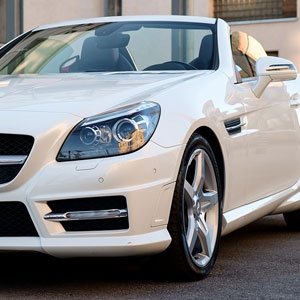
Car Body Painting: Why Is It Done in a Controlled Environment?
October 25, 2017
Car body painting equipment produces noxious fumes. Sure, the paint job imbues the auto with a high-quality look, a like-new sheen that acts as a restorative tonic. But the solvent-based chemical paints also emit volatile organic compounds (VOCs), a chemical soup that will prove harmful to the local surroundings unless the work is conducted within a controlled environment. Just for argument's sake, what happens if those emissions escape?
Hypothetical Exposures to VOC Fumes
If we play the role of Devil's advocate for a minute and just let the paint fumes escape, what's the worst that could happen? Well, bad things would happen because solvent-based car paints emit harmful gases, as detailed in this National Pollutant guide (www.npi.gov.au). Now, there are all kinds of volatile organic chemicals on the market, but few of them are thrown out with the same degree of dynamic force as a car spray paint system. Those gaseous chemicals are bound to impact the ecology if they're allowed to freely roam. Worse still, the chemical discharge, floating unimpeded, will endanger the lives of those operating the equipment. Left to drift on an afternoon breeze, the fumes will also harm the health of anyone who's unlucky enough to be within range of the car paint VOCs.
Building a Controlled Environment
What's this sealed enclosure called by the industry insiders that wield the car body painting equipment? It doesn't take much figuring out, right? This is a spray booth, a garage-sized cubicle that's designed to stop the gaseous solvents from escaping. The operators in here are wearing protective gear because this is an enclosed space. Downdraft fans are blowing, intake filters are operating, and the spray is delivering a uniformly applied coating of glossy paint. That gear is preventing respiratory distress. It's also stopping the toxic solvents from irritating the eyes and skin of the paint shop workers. Finally, the booth is built to stop those volatile chemicals from harming the environment. Otherwise, the atomized paint gases, as they left the spray painting bay, would be declassed as pollutants.
This particular pollutant cloud lays claim to some nasty attributes. VOCs cause cancer. They abide in the air currents and float long distances. A best-case scenario here would be felt as an irritated eye or a sore throat. At worst, the long-term effects will accumulate. As they did, the impact would worsen. Exposed over the long-term, possible consequences include liver and kidney damage, plus a whole host of other nasty symptoms. Fortunately, body shop experts always use a controlled environment when giving a car its colourful facelift.
Optimized by NetwizardSEO.com.au
Posts 2018
Posts 2017
- Do Not Disregard Windshield Cracks
- Car Maintenance: How Exhaust System Cleaning Can Help Boost Engine Performance
- Causes of Leaking Car Radiators
- Car Tune Up Services: How To Tell When Your Car Needs It
- Car Body Painting: Why Is It Done in a Controlled Environment?
- How Often Do You Need to Change Your Oil Filters?
- Cheap Smash Repairs in Sydney: Quality for Less
- Paintless Dent Removal Services: Professional Removal of Unwanted Vehicle Dents
- Signs that Your Car Needs an Overhaul
- Brake and Suspension Checks, Maintenance and Services in Sydney
- Panel Beating Services: What is it all about?
- Tips in Choosing the Best Car Mechanical Repair and Smash Repair Services in Sydney


